Politics
L.A. was forged by global commerce. Can the metropolis we know survive the Trump trade wars?

When Fang Chen was growing up in the wealthy city of San Marino in the 1980s, it was still a majority white community, one where locals occasionally exploded into ugly moments of racism at the arrival of new Asian residents.
Today, the community is nearly 70% Asian, with nearly half of all residents born outside the country, according to the U.S. census. And Chen, a stay-at-home mom who travels frequently to China to visit relatives, said that for years she has urged friends and family there (assuming they have the means) to consider purchasing a stately mansion on one of San Marino’s graceful tree-lined streets.
But President Trump’s sweeping on-again, off-again tariffs have caused her to reconsider.
“I’m not sure I can make that case anymore,” she said last week, relaxing under a tree in the manicured green expanse of Lacey Park, where she had retreated, she said, to try to decompress from all the unsettling economic news. “There’s a lot of anxiety among my neighbors, because so many of us have friends and relatives in the countries affected by the tariffs.”
Like few other places in the U.S., the economy and culture of Los Angeles and its sprawling suburbs have been forged by globalization. The L.A. metro area has more foreign-born residents than any city but New York, many of whom go back and forth to their ancestral countries with some regularity. Its massive port complex, sprawling across San Pedro and Long Beach, is the largest in the Western Hemisphere. There are more languages spoken here —185, according to the census — than in any city but New York. Local businesses, from toy sellers to restaurants to small family day-care operations, rely on goods imported from elsewhere. It is a place whose distinctive culture arises from its sense of being connected to communities across the globe.
“A place you can travel around the world by going from neighborhood to neighborhood,” said former Los Angeles Mayor Antonio Villaraigosa, now a candidate for governor. “A global city.”
1
2

1. Fasika Abraham arrived in L.A. in the mid-1990s after fleeing political violence in Ethiopia. “If you’re unhappy in this country,” he says of the U.S., “you’ll be unhappy in heaven.” (Jason Armond / Los Angeles Times) 2. Merkato Ethiopian Restaurant and Market is a draw in L.A.’s Little Ethiopia. (Jason Armond / Los Angeles Times)
A global metropolis that, last week, was left shaken and on edge by Trump’s threats to upend and rework global trade. From the multinational residents of million-dollar homes in the suburbs to cramped apartments in the dense urban core, to the tens of thousands of warehouse owners, retailers and food merchants who rely on imports, people across the region expressed profound uncertainty over what a looming trade war — even the threat of one — could do to Los Angeles’ economy.
At the start of the month, Trump announced that the U.S. would begin applying a baseline tariff of 10% on imported goods from all foreign countries. Several dozen nations were to face additional tariffs based on what his administration described as an unfair trade imbalance, with Vietnam facing a 46% tax on its goods, Thailand a 36% tariff, India 26%, South Korea 25%, Japan 24% — and on it went.
But midweek, with U.S. stock markets in turmoil as the tariffs took effect, Trump abruptly changed course. He said the universal 10% tariff on most nations would be paused for 90 days, and the higher rates targeting countries with a trade imbalance lowered to 10%. At the same time, he escalated his standoff with China, raising duties on imports to 145%. Trump’s tariff on foreign automobiles, set at 25%, remains in place.
On Friday, China retaliated by raising its tariffs on American goods to 125%, even as the European Union suspended its plans for a 25% tariff on American goods while waiting out Trump’s next moves.
Taken together, it’s a trade war roller coaster that has business owners around the region scrambling to comprehend the effects on their profit margins and plot a viable path forward.
In the San Fernando Valley, Justin Pichetrungsi is the chef at Anajak Thai, the restaurant that his immigrant parents started and that he took over in 2019 and turned into a food-world darling, written up in the Michelin Guide and celebrated as the Los Angeles Times’ top restaurant in 2022. Part of what helped propel Anajak’s glittering star was its Thai Taco Tuesday, which started as a staff meal for his Mexican-born cooks and turned into a fusion phenom.
“We use so much fish sauce it’s crazy,” said Pichetrungsi, noting that “really good high-quality fish sauce, it’s gonna come from Thailand or Vietnam.” Already he said last week, it is becoming more scarce and prices are rising. And what would tariffs do to his Michelin-lauded wine list, which leans heavily on imported natural wines?
-
Share via
Listen as residents share the positive and negative effects of globalization in their lives.
Fifty miles south, in Fountain Valley, Danny Tran, who with his wife, Albee, runs Son Fish Sauce, sat down to write a message to his employees and customers. “One thing is for sure,” he wrote, “the road ahead is going to be bumpy as hell.”
Albee Tran, who was born and raised in Vietnam, is the fourth generation in her family to produce fish sauce. She met Danny, who is Vietnamese American, when he decamped to Saigon during the Great Recession for a three-week vacation that turned into a three-year stay. Together they created a company, moved back to California, and started selling high-end fish sauce to U.S. outlets including Whole Foods and Bristol Farms.
On L.A.’s Westside, Ivan Vasquez, 43, emigrated from Oaxaca, Mexico, when he was 16. He learned English at University High School in Westwood and began working in restaurants, rising from a dishwasher at Carl’s Jr. to a district operator overseeing 15 outposts for Baja Fresh.
Still, he dreamed of opening his own restaurant. He wanted to serve Oaxacan food, incorporating his mother’s recipes and the region’s distinctive drink, mezcal.

“The salesperson for this mezcal is not from Mexico,” Ivan Vasquez says of the product he sells at his Madre restaurants. “He lives here. He’s American.”
(Genaro Molina / Los Angeles Times)
His first restaurant, Madre, debuted in Palms in 2013, and he since has opened locations in Torrance, Fairfax and Santa Clarita.
The pandemic hit his restaurants hard, but he survived. But now, he said, the tariffs, if enacted, would hit just about everything that passes through his business. There is the mezcal itself, all 55 brands he sells, many of which are imported from Mexico by American companies. And there are the napkins, straws, produce, kitchenware, even the light fixtures, many of which are imported from China.
Vasquez grabbed a bottle of mezcal and raised it up dramatically: “The salesperson for this mezcal is not from Mexico,” Vasquez said. “He lives here. He’s American. He’s got a job to do here. He has a family to support.”
Though it may be tough to imagine for people who know the region only as it is today, Los Angeles was not always a global center — or even a particularly cosmopolitan one.
The city was founded in 1781 and grew up on railroads and oil, at one time accounting for as much as 25% of the world’s oil output. In the early 20th century, the twin engines of its growth were Hollywood movies, which made the city famous, and manufacturing, which actually drove the economy.
Bolstered by the nation’s huge defense buildup during World War II, the region emerged as a manufacturing center in the 1950s and ‘60s. While movie stars lived in the Hollywood Hills and coastal bluffs, neighborhood after neighborhood of modest ranch homes began to rise across the flatlands, housing for the tens of thousands of workers who kept the factories rolling, taking home decent wages that raised the standard of living across the region.
“It felt like a new factory opened up every few years, and there were jobs for everyone,” recalled Mack Johnson, 70, who grew up in South Los Angeles.
That began to shift in the 1970s, as the first great wave of globalization hit the city. Companies started opening factories overseas in search of cheaper materials and labor, a trend that accelerated in the 1980s and 1990s. The plant closures tore up communities, vaporizing what had been stable union jobs. The shuttered factories hulked over degrading neighborhoods like cavernous empty shells.
Former state Sen. Martha Escutia, 68, recalled that her grandfather worked at the Bethlehem Steel plant in Bell but lost his job in the first wave of plant closures. He eventually got another job, in Pacoima, with a lower wage and a much longer commute.
But globalization was coming for Pacoima, too. Former Democratic state Sen. Richard Alarcon was a member of the L.A. City Council in the 1990s, when the Price Pfister factory in Pacoima moved operations to Mexicali.
The era brought the rise of maquiladoras, factories operated by U.S. companies just over the Mexican border, where they could produce goods at far cheaper costs and export them back to U.S. consumers at lower prices. The trend was a natural outgrowth of the North American Free Trade Agreement, signed in 1994, which lowered tariffs between the U.S., Mexico and Canada and prioritized economic cooperation among the nations.
Maquiladoras brought jobs to Mexico and thriftier price points for cost-conscious consumers. But in Pacoima, Alarcon said, workers lost their jobs, and the jobs that replaced them often offered far lower wages.
Globalization was buffeting the region with other big changes.
Successive waves of immigration redefined Los Angeles. Between 1980 and 2010, millions of people found their way here, some fleeing persecution, others drawn by opportunity.
South Los Angeles, which once had a largely Black population, is now more than 60% Latino. The southeast cities, including South Gate, Bell and Bell Gardens, once mostly white, are now about 90% Latino. Huge numbers of Asian immigrants have settled throughout the San Gabriel Valley.
1

2

3

1. An undated historic photo of a Los Angeles tortilla factory. (John Malmin / Los Angeles Times) 2. A 1930 photo of assembly line workers at a Ford plant in Long Beach. (Los Angeles Times) 3. An undated photo of workers packing noodles at a Nissin Food Products plant in Gardena. (Bruce H. Cox / Los Angeles Times)
And even as factories closed, L.A. was able to take advantage of another offshoot of globalization. International trade spawned the use of giant cargo ships ferrying goods across the oceans in massive containers. The city’s harbor boasted deep channels that could accommodate bigger ships, as well as acres of vacant land near the docks where containers could be offloaded. The adjacent ports of Los Angeles and Long Beach were booming.
“By luck and good work, we were perfectly situated,” said City Councilman Tim McOsker, whose family has deep roots in San Pedro. “We could adjust to the new world of bigger ships and big containers. We became the shipping capital.”
These days, about 40% of all goods entering the U.S. come in through the combined ports of Los Angeles and Long Beach. “One in 9 jobs in L.A. County are directly related to the port,” McOsker said. “Think about that. That’s amazing.”
And, he added, in a time of trade wars: ”It’s terrifying.”
These colliding forces recast the region into what it is today: dizzyingly diverse and deeply intertwined — economically and culturally — with places around the globe.
Take Koreatown, one of L.A’s most densely populated neighborhoods. It is home to longtime Korean immigrants and their offspring, but also more recently acclimated Bangladeshis, Central Americans and Oaxacans. Hipsters, drawn to newly rehabbed condos, have moved in. The sidewalks are packed with vendors, and merchants advertise in a host of languages, including Spanish, English and Korean.
On Vermont Avenue, shoppers can pick up a box of doughnuts, consult with a Salvadoran attorney, seek respite at a Korean day spa, pick up meat at a carniceria, or dine out at a Korean barbecue.
Jackson Yang, now 80, was 39 when he came to L.A. County from Taiwan. He and his wife were seeking a better education for their children, and he hoped to build a successful trading business.
He started out selling toys, mugs and ceramics at a swap meet in Cerritos.
“From there I learned about what people are looking to buy,” he said last week. “I started from zero, and now we have revenue of almost $400 million a year between our two companies.”
Yang has a home on the Palos Verdes Peninsula and 11 grandchildren to visit him. He has stepped back from leading Seville Classics, the Torrance-based company that he built into an international force, with offices on multiple continents. In 2000, his son, Frank, founded the successful Torrance-based housewares company simplehuman.
Yang said across-the-board tariffs would stifle his business, but even tariffs limited to China will hurt.
“We’ve been thinking about Mr. Trump wanting to bring manufacturing into the U.S., but some items we bring in today cannot be built in the U.S.,” Yang explained. “We’ve been encouraging some of the factories to maybe move to the U.S., but it’s too expensive when you’re talking about a $10 item with a lot of labor involved. It’s not really possible for the U.S. to manufacture that.”
Smadar Gubani, 60, who emigrated from Israel in 1987, is not directly involved in international trade — but her day-care business exists as a result of it. She launched it in 1997, after struggling to find affordable day care for her daughter Hannah, who is named after Gubani’s Moroccan grandmother and her husband’s missing older sister, one of thousands of Yemenite children who disappeared after their families were evacuated to Israel between 1949 and 1950.

“No one can predict what Trump’s gonna do, what China’s gonna say,” Asher Gamzo of Gamzo & Co., a luxury jeweler in downtown L.A., says of the looming trade wars.
(Myung J. Chun / Los Angeles Times)

The trade wars set off by President Trump’s tariff threats have upended sales in the globalized jewelry market.
(Myung J. Chun / Los Angeles Times)
Gubani is Orthodox, as are most of the toddlers who cavort through her wonderland of sun-bleached playhouses. But they represent the global diversity of L.A.’s half-million Jews, melding the Hebrew and English spoken at day care with the Persian or Yiddish learned at home.
Her day care provides kosher food, serving recipes learned from her mother and collected in a 2013 cookbook. She buys whatever produce is on sale, but most kosher meat is now imported from Mexico and South America. Her youngest students snack on Bamba, the Israeli peanut butter puffs given to teething babies. Tariffs could hit her in lots of ways.
“What can I do?” Gubani asked, rocking the son of a former student in her lap. “Sometimes I just block my eyes and I put the stuff that I need [in my cart]. If I look at the prices, I will not buy nothing.”
Rising food prices — both the recent surges tied to inflation and the prospect of what tariffs would mean for imported goods — are a serious concern in communities across the region.
Every night, Maria Allana, 52, and other Central American immigrants set up food stands at South Bonnie Brae and 6th streets in Westlake for what is known as the Guatemalan Night Market.
Here, immigrants yell out their menus and sweet-talk potential customers as they stroll by. They sell grilled meats, aguas frescas and dishes from their native lands in Guatemala, El Salvador and Honduras. On a typical night, crowds huddle around the vendors, and even homeless people drop by to get discounted meals.
But the crowds have thinned out since the Trump administration’s crackdown on immigration. And inflation has cut into profits, making it harder to send money to their families back home.
“Everything is getting expensive,” Allana said.
The 50 pounds of dough she buys to make her tortillas jumped from $17 to $35. Refilling the gas tank also went up.
“With all this happening here, I’m sometimes considering whether it’s best to just head back home,” she said.
Back in San Marino, real estate agent Brent Chang, 54, who has been selling houses in the area since 2008, has a clear understanding of how much his business is tied to the global economy. For decades now, the city’s housing market has been lifted by whichever Asian economy was thriving at the time.
Japanese people in the 1980s, then Taiwanese in the ‘90s, and Chinese in the 2000s — so much so that when the rest of the housing market crashed in 2008, San Marino was untouched.
The influx has sent home prices soaring; the median home value in the city is $2.7 million, placing it in the realm of ultraluxe Westside enclaves such as Beverly Hills and Bel-Air. Chang said deep-pocketed Asian buyers have helped grow the city’s school district into one of the best in the state, and newcomers are often quick to invest in the city, including a Taiwanese homebuyer who’s planning to fund a new data software service for the San Marino Police Department.
“In the 1970s, I was the only Asian kid around. Look at it now,” Chang said. “You can’t go backwards and try to make the world small again.”
Times staff writer Anthony Solarzano contributed to this report.

Politics
Less than half of DOGE-terminated contracts can be publicly tracked, only about a quarter of grants: watchdog
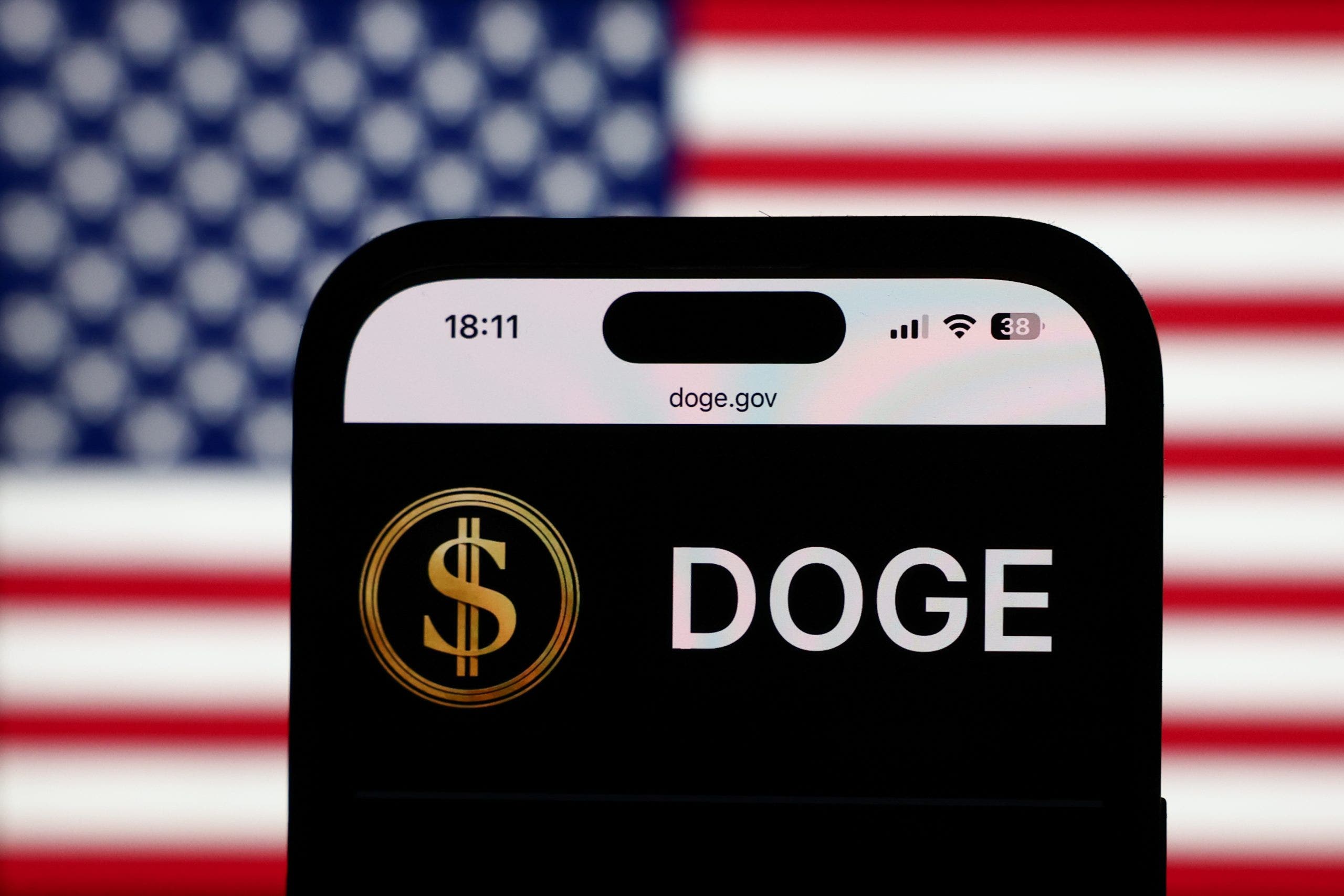
With Elon Musk’s departure from the agency, there’s debate roiling over how effective the Department of Government Efficiency’s (DOGE), has been in its mission.
In a report released just two days prior to Musk stepping down, financial watchdog Open The Books published a report finding it is likely impossible for the average American taxpayer to track the savings associated with the contracts and grants that were terminated by the DOGE team.
According to Open The Books’ analysis, which mined all the data published on DOGE’s official website, the average American taxpayer would likely only be able to confirm 42% of contracts and 27% of grants through an independent review of public federal spending databases.
“This doesn’t mean these targets aren’t real, it simply means it’s very hard for taxpayers who want to see additional savings to find proof and evidence of savings,” Open The Books points out in its analysis, shared in a report the group released Tuesday.
‘BUREAUCRATIC AND WASTEFUL’: DOGE SNIFFS OUT EYE-POPPING SPENDING ON BIDEN DEI EFFORTS IN KEY AGENCY
Elon Musk (LEFT) has been a controversial figure in the Trump administration, with many of his critics arguing he has wielded too much power in the Trump administration. (Getty)
“Because taxpayers don’t have access to real-time transparency and a real-time look at the Treasury Payment System, it’s still too difficult for even a highly motivated Joe Taxpayer to confirm the savings claims DOGE is making,” the analysis, released ahead of Elon Musk stepping down from running the agency, continued. “It’s also far too easy for critics to sew [sic] doubt and confusion.”
DOGE says on its website that the group’s work up to this point has provided the American taxpayer with $175 billion in “estimated” savings from the elimination of contracts, grants and leases, as well as through renegotiations, fraud and improper payment deletion and other mechanisms.
However, DOGE’s estimated savings have been contested by watchdog groups and budget experts. Such critics have posited that the inclusion of already canceled contracts, double-counting or misrepresentation of contract values, and the unaccounted cost burden that could be imposed on the government when it has to re-hire folks down the line, or revamp its productivity, due to DOGE cuts, have led to inflated savings estimates.
Nate Malkus, a senior fellow at the conservative-leaning American Enterprise Institute, has accused DOGE of “overestimating contracts by a factor of two,” according to CBS News.
ELON MUSK ‘DISAPPOINTED’ BY TRUMP’S SPENDING BILL, SAYS IT UNDERMINES WHAT DOGE IS DOING
But White House spokesperson Harrison Fields told Fox News Digital that DOGE has produced “historic savings” for the American people.
“DOGE is working at record speed to cut waste, fraud, and abuse, producing historic savings for the American people,” Fields said. “The DOGE Wall of Receipts provides the latest and most accurate information following a thorough assessment, which takes time. Updates to the DOGE savings page will continue to be made promptly, and departments and agencies will keep highlighting the massive savings DOGE is achieving.”
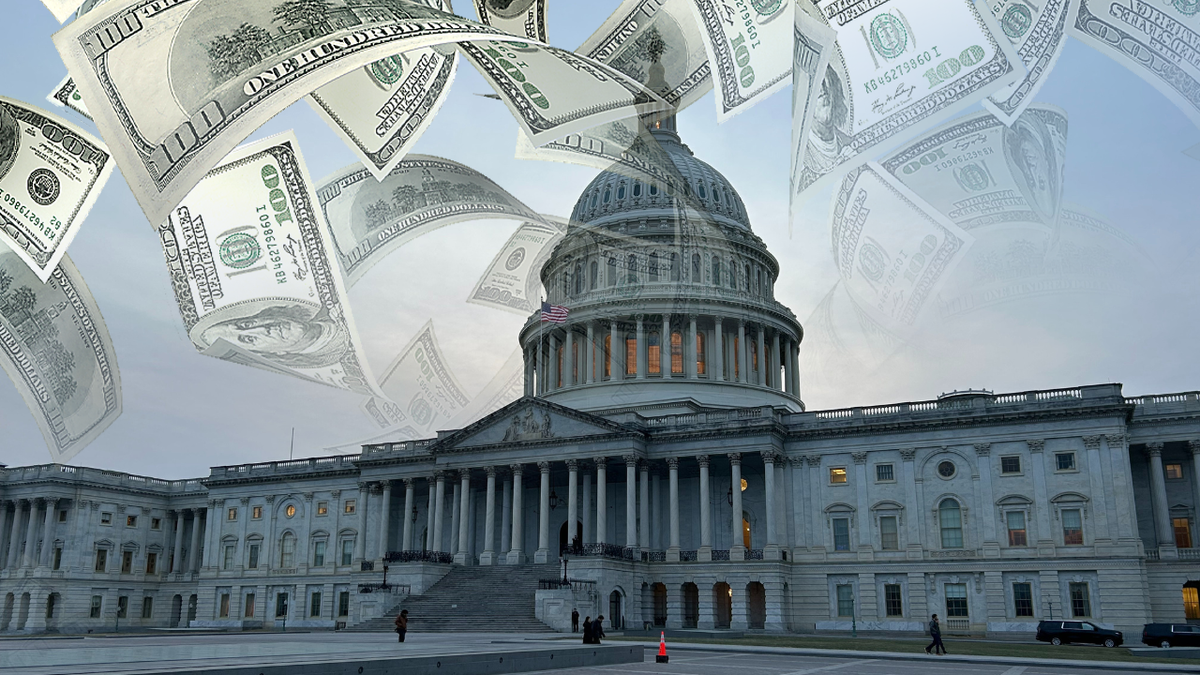
“DOGE’s job is to identify, not enact, savings targets. It’s up to Congress to do the heavy lifting,” Open The Books said in their analysis about DOGE savings. (Fox News Digital)
“DOGE and Elon Musk have done the country an incredible service by identifying savings targets,” added Open The Books CEO John Hart. “Having worked on the last major deficit commission with the late Senator Tom Coburn, we would have been elated to have had Musk in our corner. Now it’s up to Congress to not only turn DOGE’s recommendations into durable savings but to go beyond DOGE’s scope and truly tackle our long-term debt and deficit crisis.”
Open The Books highlighted two “common sense” standards to help establish an “intellectually honest” approach to understanding the true impact of government cuts, such as those being recommended by DOGE.
The first is the “durable standard,” which asks whether a proposed cut can be easily reversed.
OBAMA-NOMINATED JUDGE ALLOWS LAWSUIT TARGETING MUSK’S ROLE WITH DOGE TO PROCEED, DROPS CLAIMS AGAINST TRUMP
“Describing something as ‘durable’ does not mean it is permanent or irreversible; it simply means it is hard to reverse,” the Open The Books’ analysis stated. “The most durable budget cut in our constitutional system would be passed by Congress, signed into law by the president and be clearly constitutional, or unassailable in a court challenge. Budget cuts become less durable when they lack any of these three elements.”
The second is called a “duty standard,” which illuminates the power behind certain cuts based on who is trying to impose them.
“In our constitutional system, the founders gave the job of budget savings to three branches but primarily to Congress,” Open The Books points out. “DOGE’s job is to identify, not enact, savings targets. It’s up to Congress to do the heavy lifting. And We the People have a responsibility to be informed and hold our elected officials accountable.”
WHITE HOUSE SENDING $9.4B DOGE CUTS PACKAGE TO CONGRESS NEXT WEEK
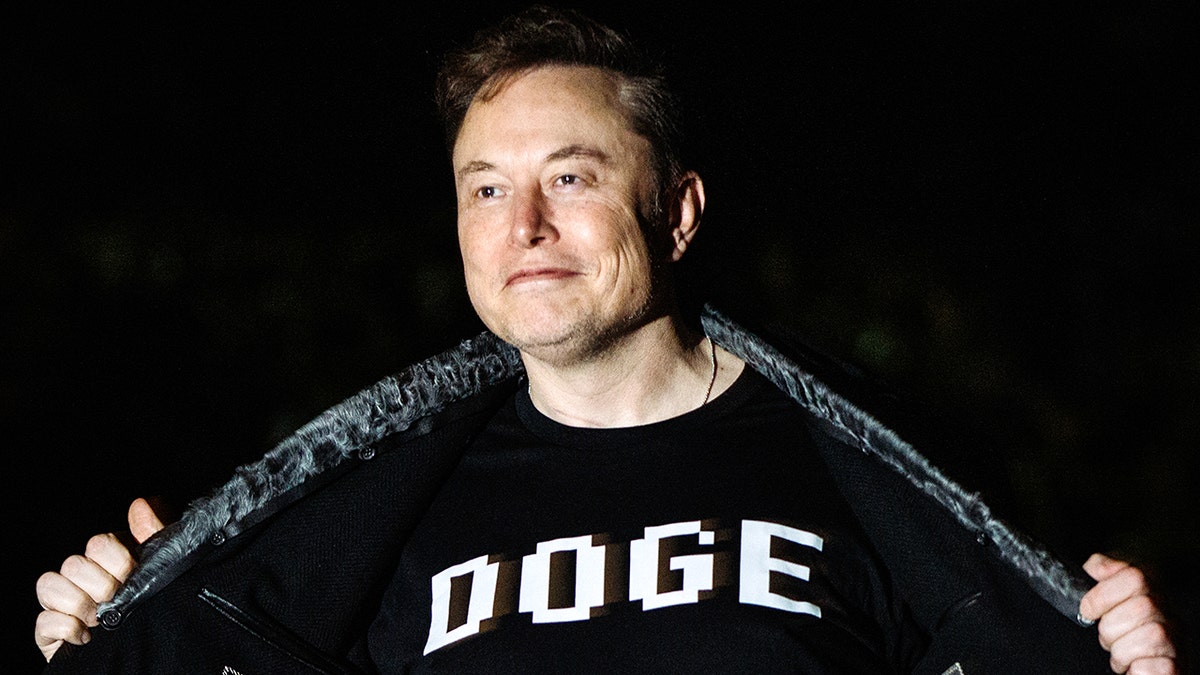
White House Senior Advisor Elon Musk walks to the White House after landing in Marine One on the South Lawn with U.S. President Donald Trump (not pictured) on Mar. 9, 2025, in Washington, DC. (Samuel Corum/Getty Images)
Open The Books ultimately concluded that due to various limitations associated with publicly available data on government spending and revenue, in particular a lack of real-time access to the government’s Treasury Payment System, it is still too difficult for even the most motivated average American citizen to either confirm, or deny, the savings claimed by DOGE.
Elon Musk officially stepped down from his role as DOGE chief Thursday evening, as his position of “special government employee” in the Trump administration was limited by law to a few months. Amid the transition, Musk criticized Republicans’ spending bill that was passed ahead of Memorial Day in the House, indicating he was “disappointed” it would increase the federal deficit.
“I was disappointed to see the massive spending bill, frankly, which increases the budget deficit, not just decrease it, and undermines the work that the DOGE team is doing,” Musk told CBS News in an interview that will air in full on June 1.
Politics
Supreme Court sharply limits environmental impact statements in victory for developers
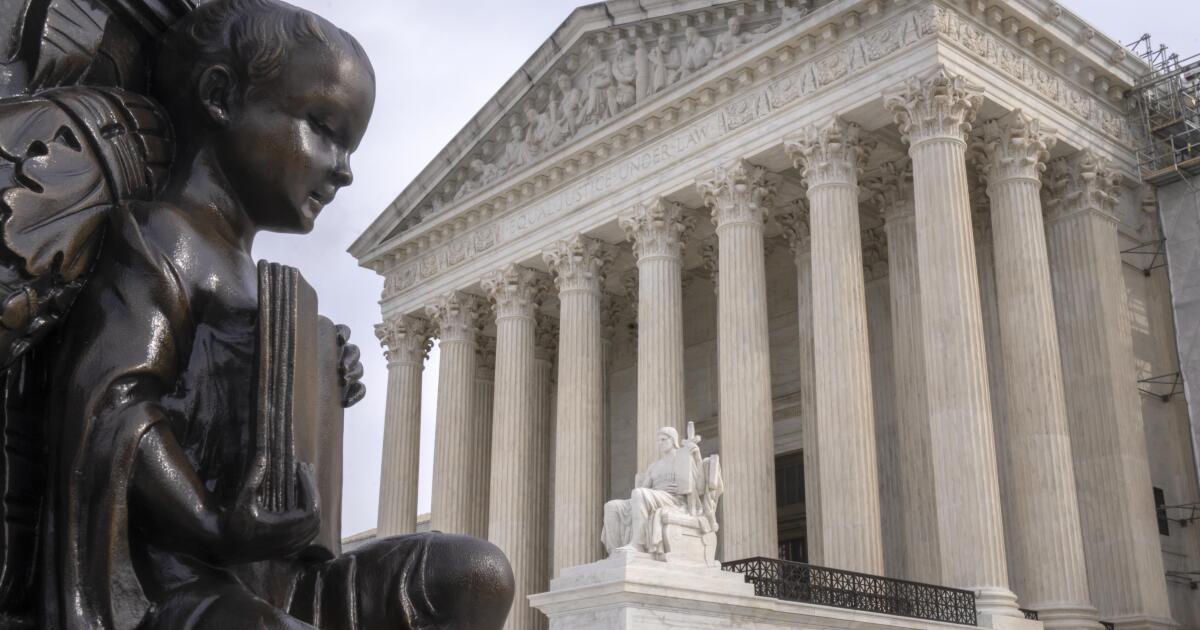
WASHINGTON — The Supreme Court on Thursday sharply limited the reach of environmental impact statements in a victory for developers.
The justices said these claims of the potential impact on the environment have been used too often to delay or block new projects.
“A 1970 legislative acorn has grown over the years into a judicial oak that has hindered infrastructure development under the guise of just a little more process. A course correction of sorts is appropriate,” said Justice Brett M. Kavanaugh, speaking for the court.
He said procedural law has given judges and environmentalists too much authority to hinder or prevent development, he said.
“Fewer projects make it to the finish line. Indeed, fewer projects make it to the starting line. Those that survive often end up costing much more than is anticipated or necessary,” he said. “And that in turn means fewer and more expensive railroads, airports, wind turbines, transmission lines, dams, housing developments, highways, bridges, subways, stadiums, arenas, data centers, and the like. And that also means fewer jobs, as new projects become difficult to finance and build in a timely fashion.”
The decision could loom large in California and the West because the 9th Circuit Court of Appeals has taken a broad view of environmental protection and the scope of impact statements.
The National Environmental Policy Act of 1970s was the first of a series of landmark environmental laws. It required federal agencies to prepare a report assessing the likely impact of projects that will be funded or approved by the government.
“The goal of the law is to inform agency decision-making, not to paralyze it,” Kavanaugh said.
In a unanimous decision, the high court ruled for the developers of a proposed 88-mile railroad in northeastern Utah, a spur line which could carry crude oil that would be refined along the Gulf Coast.
The project needed the approval of the U.S. Surface Transportation Board which produced 3,600 pages of analysis on the potential impact.
In blocking the proposal, the D.C. Circuit Court of Appeals cited its potential to spur more drilling for oil in Utah and more pollution along the Gulf Coast. The judges said these “upstream” and “downstream” impacts of the railroad must be considered before the new rail line is approved.
Seven counties that favored the development appealed to the Supreme Court and argued that the potential environment impact should be limited to the building of the railroad itself.
Kavanaugh and the court agreed. “The board did not need to evaluate potential environmental impacts of the separate upstream and downstream projects,” he said.
The court’s three liberals — Justices Sonia Sotomayor, Elena Kagan and Ketanji Brown Jackson — concurred in the decision but did not sign on to Kavanaugh’s opinion.
Justice Neil M. Gorsuch, a Colorado native who is friends with some of the leading developers, did not participate in the decision.
Politics
Musk officially steps down from DOGE after wrapping work streamlining government
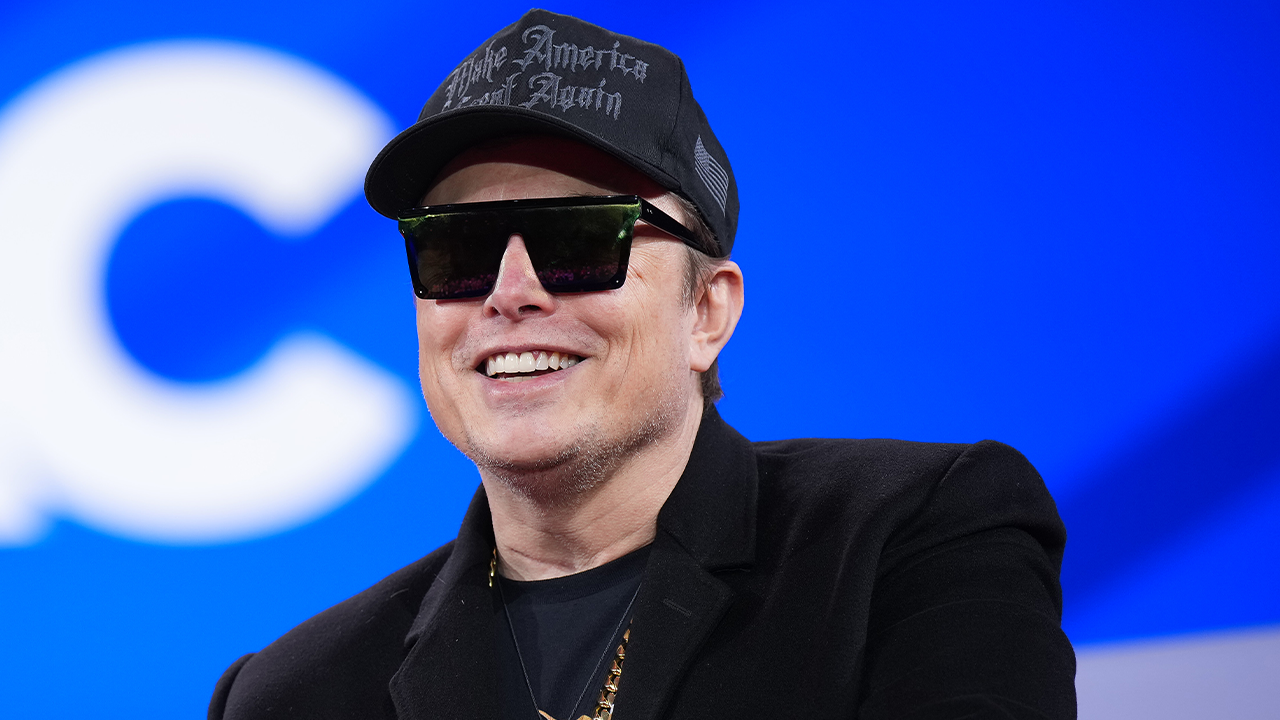
Elon Musk is beginning the process of stepping down from his role as head of the Department of Government Efficiency (DOGE).
The Tesla and SpaceX CEO posted on X on Wednesday night that his time as a special government employee is coming to an end and thanked President Donald Trump for the opportunity to cut down on wasteful spending.
“The @DOGE mission will only strengthen over time as it becomes a way of life throughout the government,” Musk wrote in his post. The White House confirmed to FOX that Musk’s post is accurate and offboarding will begin Wednesday night.
Musk has been the public face of DOGE since Trump signed an executive order establishing the office on Jan. 20. DOGE has since ripped through federal government agencies in a quest to identify and end government overspending, corruption and fraud.
ELON MUSK SAYS HE ‘FULLY ENDORSES’ TRUMP AFTER GUNFIRE AT PENNSYLVANIA RALLY
Tesla and SpaceX CEO Elon Musk has officially stepped down from his role helping lead DOGE, which had long been the plan as a special government employee. (Brandon Bell/Getty Images)
He was officially hired as a “special government employee,” which is a role Congress created in 1962 that allows the executive or legislative branch to hire temporary employees for specific short-term initiatives.
Special government employees are permitted to work for the federal government for “no more than 130 days in a 365-day period,” according to data from the Office of Government Ethics. Musk’s 130-day timeframe, beginning on Inauguration Day, was set to run dry on May 30.
DOGE is a temporary cross-departmental organization that was established to slim down and streamline the federal government. The group itself will be dissolved on July 4, 2026, according to Trump’s executive order.
Musk and Trump have both previously previewed that Musk’s role was temporary and would end in the spring.
“You, technically, are a special government employee and you’re supposed to be 130 days,” Fox News’ Bret Baier asked Musk during an exclusive interview with Musk and DOGE team members in April. “Are you going to continue past that or do you think that’s what you’re going to do?”
MUSK NOT LEAVING YET, WRAPPING UP WORK ON SCHEDULE ONCE ‘INCREDIBLE WORK AT DOGE IS COMPLETE’: WHITE HOUSE
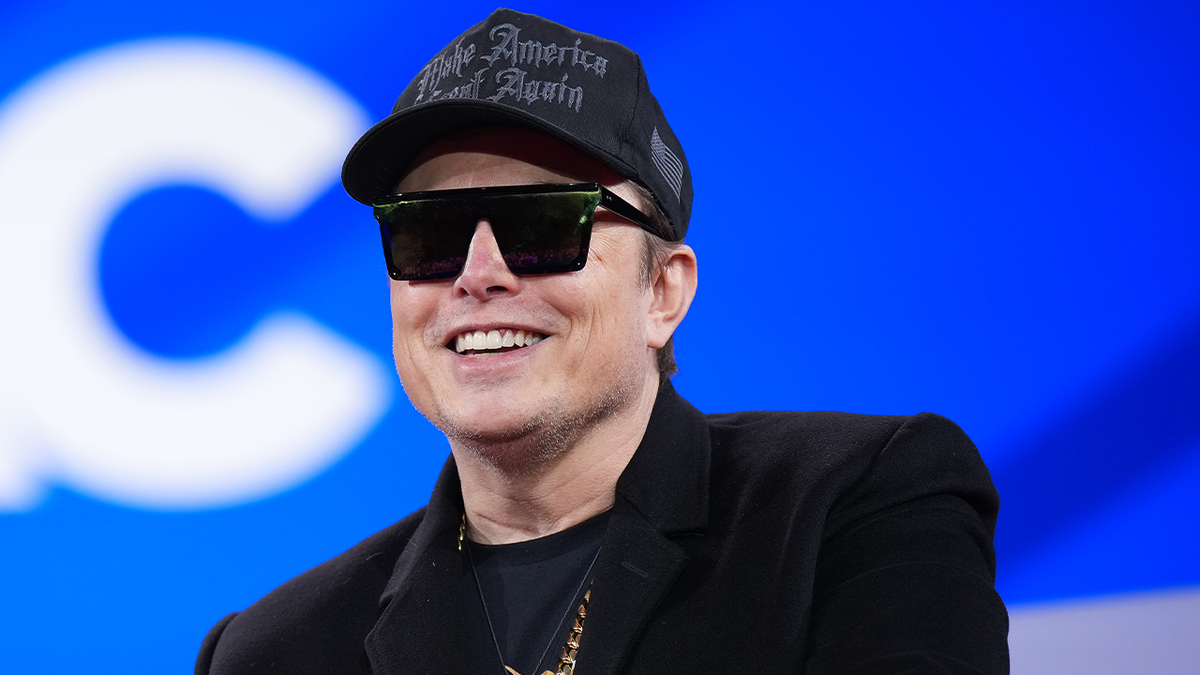
Elon Musk was hired as a special government employee, which only permits 130 days of employment, when he was chosen to lead DOGE. (Andrew Harnik/Getty Images)
“I think we will have accomplished most of the work required to reduce the deficit by a trillion dollars within that timeframe,” Musk responded.
Trump hinted at Musk’s departure in comments to reporters on March 31 when he was asked if he wants Musk to remain in a government role for longer than the predetermined 130 days.
“I think he’s amazing. But I also think he’s got a big company to run,” Trump said in March. “And so at some point he’s going to be going back.”
“I’d keep him as long as I can keep him,” Trump said. “He’s a very talented guy. You know, I love very smart people. He’s very smart. And he’s done a good job,” the president added. “DOGE is, we’ve found numbers that nobody can even believe.”
More recently, Musk said during a Tesla earnings call on April 22 that he will take a step back from his work as DOGE’s leader.
DOGE CHAIN OF COMMAND REVEALED IN COURT FILING, SHOWING MUSK IS NOT THE BOSS
“I think starting probably in next month, May, my time allocation to DOGE will drop significantly,” Musk said during Tesla’s earnings conference call. “I’ll have to continue doing it for, I think, the remainder of the president’s term just to make sure the waste and fraud that we stopped does not come roaring back, which it will do if it has the chance. So I think I’ll continue to spend, you know, a day or two per week on government matters for as long as the president would like me to do so and as long as it is useful.”

Elon Musk jumps on state as he joins former president Donald Trump during a campaign rally in Butler, Pennsylvania. (JIM WATSON/AFP via Getty Images)
“But starting next month,” he added, “I’ll be allocating far more of my time to Tesla now that the major work of establishing the Department of Government Efficiency is done.”
Amid Musk’s work with DOGE, Democrats and activists have staged protests against the tech billionaire and his companies, including working to tank Tesla stocks.
Musk has been the public face of DOGE for months, but is not an employee of the United States DOGE Service and does not report to the acting DOGE chief, according to a court filing in March that shed additional light on the internal workings of the office.
WHO IS DOGE’S NEWLY IDENTIFIED ADMINISTRATOR AMY GLEASON? ‘WORLD-CLASS TALENT’
“Elon Musk does not work at USDS. I do not report to him, and he does not report to me. To my knowledge, he is a Senior Advisor to the White House,” Amy Gleason, the acting administrator of DOGE, wrote in a declaration included in a court filing.

President Trump has spoken highly of Elon Musk’s work with DOGE since he was chosen to lead the new agency on Jan. 20. (AP Photo/Alex Brandon)
Gleason previously worked for the United States Digital Service, which was founded in 2014 by former President Barack Obama as a technology office within the Executive Office of the President. Trump signed an executive order in January that renamed the office to the United States DOGE Service, establishing DOGE.
Though Musk has been the public face of DOGE, he “has no actual or formal authority to make government decisions himself” and is working as a senior advisor to the president, a White House official said in a separate court filing back in February.
SENATE REPUBLICAN DOGE LEADER JONI ERNST FACES FIRST DEMOCRATIC CHALLENGER IN 2026 RACE
Musk emerged as an ardent supporter of Trump at the height of the election cycle over the summer, officially endorsing Trump after the first assassination attempt against him in Butler, Pennsylvania, on July 13, 2024.

President Trump survived an assassination attempt on his life in Butler, Pennsylvania in July. (Rebecca Droke/AFP via Getty Images)
“I fully endorse President Trump and hope for his rapid recovery,” Musk posted to X shortly after the attempt, accompanied by footage of Trump raising a fist and shouting “Fight, fight, fight!” after he was left bloodied by the assassination attempt.
Musk hosted Trump on X for an expansive interview while on the campaign trail
Across Musk’s tenure as a special government employee, Trump has praised the tech billionaire for his efforts to streamline the government and cut it of overspending, including during his first address to a joint session of Congress since his second inauguration.
“Thank you, Elon. He’s working very hard. He didn’t need this. He didn’t need this. Thank you very much. We appreciate it. Everybody here, even this side, appreciates it, I believe. They just don’t want to admit that,” Trump said in March during his address, quipping that Democrats were even grateful for Musk’s work at DOGE.
-

 Education1 week ago
Education1 week agoVideo: Columbia University President Is Booed at Commencement Ceremony
-

 Culture1 week ago
Culture1 week agoDo You Know the English Novels That Inspired These Movies and TV Shows?
-

 Education1 week ago
Education1 week agoHow Usher Writes a Commencement Speech
-

 Politics1 week ago
Politics1 week agoExpert reveals how companies are rebranding 'toxic' DEI policies to skirt Trump-era bans: 'New wrapper'
-

 World1 week ago
World1 week agoEU reaches initial deal to lift economic sanctions on Syria: Reports
-

 Technology1 week ago
Technology1 week agoAMD’s new RX 9060 XT looks set to challenge Nvidia’s RTX 5060
-

 News1 week ago
News1 week agoRead the Full ‘Make America Healthy Again’ Report
-

 News1 week ago
News1 week ago'Golden Dome' Missile Shield To Be 1st US Weapon In Space. All About It














